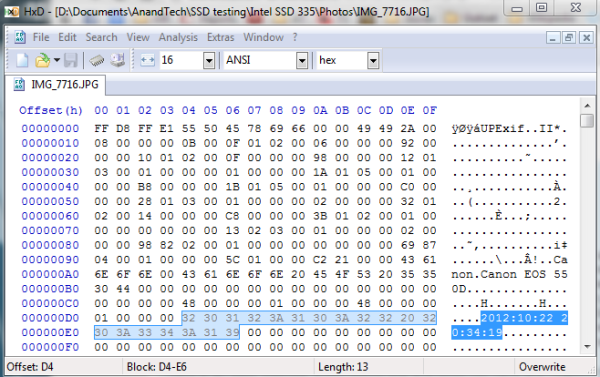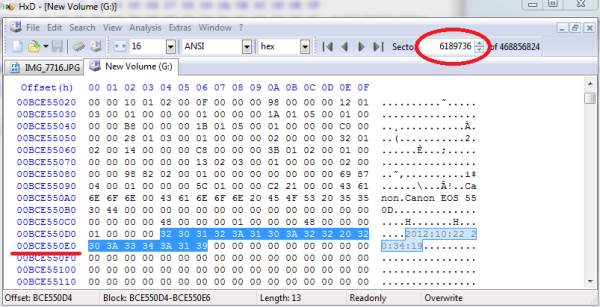TRIM & RAID-0 SSD Arrays Work With Intel 6-Series Motherboards Too
by Kristian Vättö on November 28, 2012 11:53 AM ESTEnabling TRIM for RAID-0 SSD Arrays on 6-Series Motherboard
Note: The following steps include unsupported BIOS modifications which can brick your motherboard. We take no responsibility for failures and the instructions provided below are only for informational purposes. If you still want to try the modification, you are doing it at your own risk and we strongly recommend that you backup all your data before trying any of the steps.
As I mentioned earlier, you will need either P67 or Z68 for the modification to work. So far other 6-series chipsets have not been tried but you're of course welcome to be the guinea pig (at your own risk, obviously). Next you will need to flash your BIOS in order to apply the modification. This may sound complicated but the actual process is rather easy because most of the work has already been done for you. The actual instructions are rather long because what you need depends on your motherboard, so instead of summarizing I'm just going to link the full instructions. You will need to use a modified OROM version, which can be found here.
Once you have flashed your BIOS with the new OROM, make sure your OROM has indeed been updated to version 11.6.x.xxxx (you will see this when entering the RAID utility). I recommend that you recreate your RAID array with the new 11.6 OROM because there is a high chance that you will have to do this anyway (arrays created by older OROMs may not work). You should also check that your RST drivers are up to date because older drivers do not support RAID-0 TRIM at all. Here is a link to the latest 11.6.0.1030 drivers that I used in my testing, although other 11.x drivers may work as well.
In a nutshell, that's it. You have now done all you that's necessary to enable TRIM on a 6-series motherboard. However, since all motherboards are different, I recommend trying TRIM before celebrating since there is also a lot that can go wrong.
How to Verify TRIM Is Working
You could always use the method we use but Iometer isn't exactly the most user friendly tool if you don't know what you're doing and our method involves deleting the whole volume, which also results in loss of data in the array. There is a much easier way to check the functionality of TRIM by using a hex editor and any file (credit for this method goes to XtremeSystems.org forum user Marc HFR):
1. Download and install HxD (or any other hex editor if you have a favorite).
2. Open any file you have with HxD. I used a JPG photo in this example and it worked fine. You should now see this:
3. In the right-hand column, select a string of text that is unique and copy that somewhere, you will need it later. I used the time stamp of the file because it's very likely unique, which makes the next steps easier.
4. Copy the file you opened in HxD to the root of your RAID-0 array.
5. Run HxD as an administator and open your whole RAID-0 array from Extras > Open disk.
6. Use the search tool in HxD to locate the unique text string you copied in step 3.
7. Once you have located the text string, write down the offset and sector.
8. Move the file you copied in step 4 to the recycle bin and empty it. This will delete the file and if TRIM works, the controller will also delete the data.
9. Open the RAID array in HxD again and go to the sector you recorded in step 7. If the sector is empty (full of 0's or F's), TRIM worked. If the data was not deleted, try rebooting before you start troubleshooting because it seems that a reboot is required for some SSDs to fully erase the data.













36 Comments
View All Comments
vailr - Wednesday, November 28, 2012 - link
There's also an updated motherboard bios for the Gigabyte GA-EP45-UD3R that includes the updated Intel RAID firmware 11.6.0.1702:http://forums.tweaktown.com/gigabyte/48085-gigabyt...
So: updating most P45 chipset boards should also be a viable option.
Also:t you're using an older 11.6.0.1030 RST driver.
Latest version: 11.6.2.1002 WHQL
http://www.station-drivers.com/page/intel%20raid.h...
Impulses - Wednesday, November 28, 2012 - link
I'm very tempted to try this, now that I have two 128GB Samsung 830s, just not sure it's even worth the slight hassle... The instructions look simple enough, but what I'll gain is mainly the use of both drives as a single volume, since the increased sequential I/O isn't gonna matter much when every other drive on my system is a mechanical drive. I doubt any of my apps are really gonna see an usability improvement going from 500/350 sequential read/write max to 1000/700. :pSunburn74 - Wednesday, November 28, 2012 - link
If you feel your ssd is fast enough then fine, but honestly there's a reason sad makers are still pushing speeds up as best they can. Heck its why sata3 is in the works. If ocz or corsair released a sad with sequentialsin the 1000s and random performance similar to the rest of the pack they'd be lauded as kings. Raid 0 accomplishes the same thing and now the one penalty has been made a non issueSabresiberian - Wednesday, November 28, 2012 - link
I actually didn't know Intel had made their RAID chip TRIM friendly at all (and was wondering what was taking them so long, heh), so this article is very good news for me, even though I don't have a 6-series MB.Thanks Kristian for the great article covering a topic most power builders will be interested in.
;)
vol7ron - Wednesday, November 28, 2012 - link
I'm not sure it's necessary to secure erase SSDs. At least, I didn't think it was in the past. Perhaps this would be something worth evaluating for the future.Gigaplex - Wednesday, November 28, 2012 - link
It's necessary to clean up LBAs to return back to stock performance when there's no TRIM support. It's not just a case of overwriting all the data on the drive like with mechanical drives (especially with SandForce compression/deduplication), there are special SSD tools that send a secure erase instruction to the drive.extide - Wednesday, November 28, 2012 - link
The secure erase always returns the SSD to a "like new clean slate" state. This is especially important in articles like this where you need to always start from a know control state that is always the same.Sunburn74 - Wednesday, November 28, 2012 - link
Secure erase wipes all data from the drive including the is. It was a tremendous pain in these if your using it to maintain performance. In addition you burn through write cycles quicker.CeriseCogburn - Saturday, December 29, 2012 - link
In spite of the hassle, first of all you're not "burning through" write cycles quickly, so there's no giant crisis "burning through them even quicker".You're crawling very slowly, nearly imperceptibly through write cycles.
You will throw away the drives for being pathetically slow before write cycles are an issue, and that's what will burn you in the end.
Truegee1985 - Friday, November 30, 2012 - link
I want to know if Intel's SRT version 11.6 trim support for Raid-0 on z77 chipset also work with Windows 8 Pro. I am currently using a z77 motherboard with an Ivy bridge cpu.